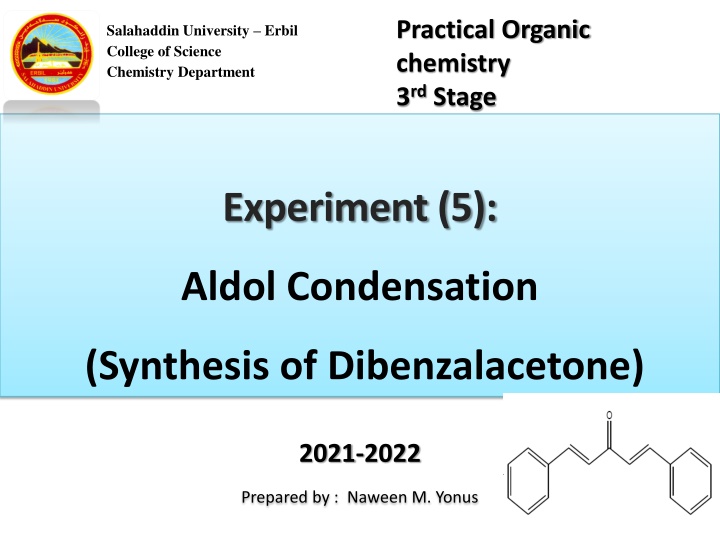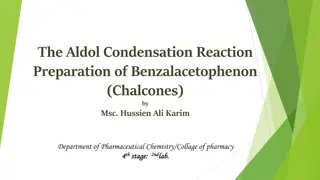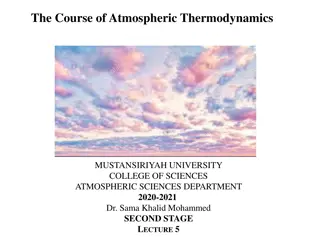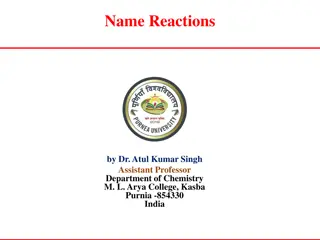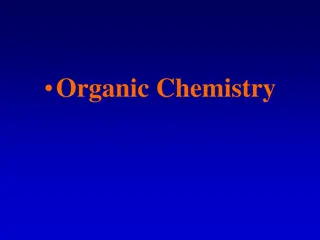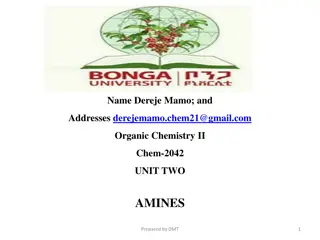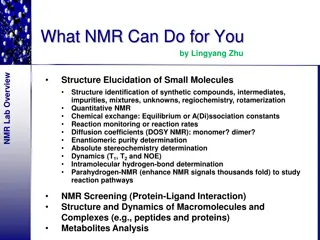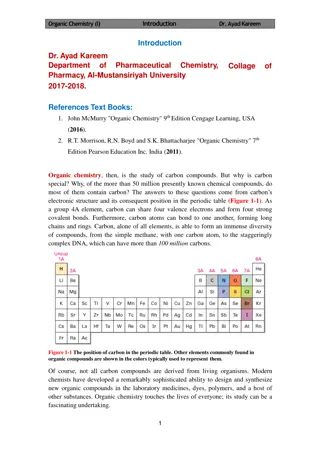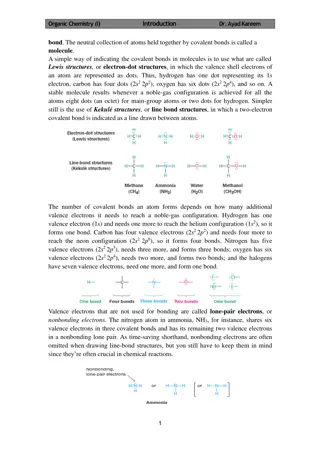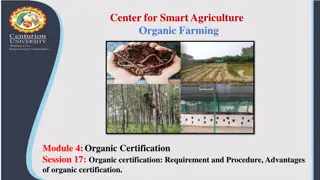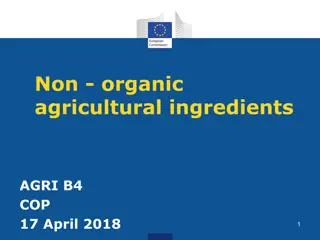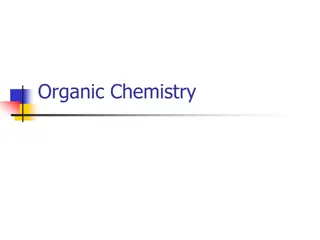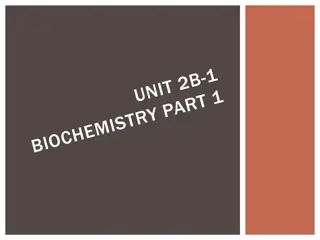Aldol Condensation in Organic Chemistry
In aldol condensation, two molecules combine to form a larger molecule, releasing a smaller molecule like water. It involves the deprotonation of carbonyl compounds to form enolates, enabling the reaction. Crossed aldol condensation occurs when different carbonyl compounds react, leading to multiple products. The process is crucial in organic synthesis, providing valuable compounds.
Download Presentation

Please find below an Image/Link to download the presentation.
The content on the website is provided AS IS for your information and personal use only. It may not be sold, licensed, or shared on other websites without obtaining consent from the author.If you encounter any issues during the download, it is possible that the publisher has removed the file from their server.
You are allowed to download the files provided on this website for personal or commercial use, subject to the condition that they are used lawfully. All files are the property of their respective owners.
The content on the website is provided AS IS for your information and personal use only. It may not be sold, licensed, or shared on other websites without obtaining consent from the author.
E N D
Presentation Transcript
Practical Organic chemistry 3rd Stage Salahaddin University Erbil College of Science Chemistry Department Experiment (5): Aldol Condensation (Synthesis of Dibenzalacetone) 2021-2022 Prepared by : Naween M. Yonus 1
Condensation Reaction: A condensation reaction occurs when two molecules join to form a larger molecule and release a smaller molecule in the process. The smaller molecule lost in the reaction is often water, but it can also be methanol, hydrogen chloride, acetic acid or several other molecules. 2
In an aldol condensation, two molecules of aldehyde or ketone are joined together along with the loss of water. For example, in the aldol condensation shown in figure 1, two molecules of ethanal are reacted to produce an , - unsaturated aldehyde and water. 3
To understand the aldol condensation, we must first understand the acidity of -hydrogens, which are the hydrogen atoms directly attached to the -carbon of a carbonyl compound, which is quite acidic compared to a typical hydrocarbon. When a carbonyl compound containing -hydrogen is subjected to a base, the compound will be deprotonated to give the conjugate base, which is called an enolate. Typical bases used to form an enolate are hydroxide (HO- ) and ethoxide (EtO- ). 4
Crossed Aldol Condensation : Crossed aldol reactions are possible with weak bases such as hydroxide or an alkoxide when one carbonyl reactant does not have an -hydrogen. Are acting without a hydrogens cannot self- condense because it cannot form an enolate. 2-Methyl-3-phenyl-1- propenal 5
A crosss aldol condensation An aldol reaction that starts with two different carbonyl compounds is called a crossed aldol reaction, if a mixture of ethanol and propanal is treated with base, two different nucleophilic enolates can form due to the presence of -hydrogen on both ethanol and propanal. Each of these nucleophilic enolates can react with both ethanal and propanal to provide four different products. These products would be very difficult to separate making such a reaction synthetically useless 6
Synthesis of Dibenzalacetone This reaction is an example of an aldol condensation The reaction is also a mixed aldol, between aldehyde and a ketone. The product is quite stable because of conjugation (resonance stabilization), and so product formation is highly favored . 8
Mechanism 1- Only the ketone has an alpha-H that can be removed by OH- base to form the enolate: O O O H2O H CH2 C CH3 CH2 C CH3 CH2 HO C CH3 2-The carbonyl group in the aldehyde is more reactive than the carbonyl of the ketone: O O O O Ph C H CH2C CH3 Ph CH2 C CH3 C H 9
3-The tetrahedral intermediate from addition is protonated: H O O O O H2O CH2C CH3 HO Ph C H CH2C CH3 Ph C H 4-Then dehydration occurs to give a stable conjugated product ( -unsaturated ketone) benzalacetone (mp 42 C). H O O C O C CH CH3 H2O HO Ph C H HO CH CH3 Ph C H H 10
The reaction is repeated by removing the -H from the ketone and the enolate reaction with the aldehyde, followed by dehydration to form Dibenzalacetone O C O C H H C C C C CH CH3 Ph C H HO H H The product has two trans double bonds (more stable). 11
Experimental Procedure 1) Place 6 ml of benzaldehyde into baker . 2) Add 2 mL of acetone. 3) Add 5 mL of 95% ethanol. Stir the mixture in an ice water bath. 4) Over a period of 15 minutes, slowly add 4 mL of 40% NaOH solution to the mixture while stirring thoroughly with a glass rod. 5) Remove the ice water bath. Stir the mixture at room temperature for another 10 minutes. 6) Place approximately 10 g of crushed ice in a small beaker. Pour the reaction mixture into the ice and stir until the precipitation occurs. 7) Collect the precipitate by filtration. 8) Wash the filtrate with water. Test the last drop of water wash with red litmus paper, continue the washing if it is still basic. 12
Homework: outlined below is a practical crossed aldol reaction that can be used for the synthesis of cinnamaldehyde. Provide the missing in gradients for this recipe. 14
